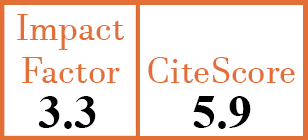Paediatric Rheumatology
Features of childhood Sjögren's syndrome in comparison to adult Sjögren's syndrome: considerations in establishing child-specific diagnostic criteria
N. Yokogawa1, S.M. Lieberman2, D.D. Sherry3, F.B. Vivino4
- Department of Rheumatic Diseases, Tokyo Metropolitan Tama Medical Center, Tokyo, Japan.
- Stead Family Department of Pediatrics, Division of Rheumatology, Carver College of Medicine, University of Iowa, Iowa City, IA, USA. scott-lieberman@uiowa.edu
- Division of Rheumatology, The Children’s Hospital of Philadelphia, Philadelphia, PA, USA.
- Division of Rheumatology, University of Pennsylvania, Philadelphia, PA, USA.
CER8486
2016 Vol.34, N°2
PI 0343, PF 0351
Paediatric Rheumatology
Free to view
(click on article PDF icon to read the article)
PMID: 26812559 [PubMed]
Received: 26/03/2015
Accepted : 04/09/2015
In Press: 20/01/2016
Published: 13/04/2016
Abstract
OBJECTIVES:
To describe the clinical features of childhood Sjögren’s syndrome (SS) in comparison to adult SS and to evaluate possible child-specific modifications to existing adult criteria for use in diagnosing childhood SS.
METHODS:
We retrospectively identified children (age <18 years) with SS and compared the clinical, laboratory, and histopathological features of these children based on presence or absence of parotitis. We compared these features to adults with SS and evaluated the applicability of existing classification criteria in diagnosing childhood SS. Child-specific modifications to existing criteria were evaluated.
RESULTS:
Twenty-six children were included in our childhood SS group. Sixteen children had parotitis at or before presentation. Absence of parotitis was associated with greater degree of organ damage based on SS disease damage index. Compared to 413 adult SS patients, childhood SS was more commonly associated with parotitis, positive serologies, neurologic and nephrologic manifestations, and non-specific features (fever, lymphadenopathy) but less commonly associated with dry mouth and dry eyes. Only a minority of these children met previously established criteria for adult SS. Inclusion of child-specific features such as parotitis and the presence of any focal lymphocytic sialadenitis on minor salivary gland biopsy increased the proportion of children meeting these criteria.
CONCLUSIONS:
Childhood SS features may be different than adult SS features necessitating child-specific criteria for better diagnosis of childhood SS, a key step towards better understanding the features, prognosis, and outcomes in this disease.


